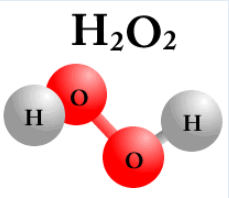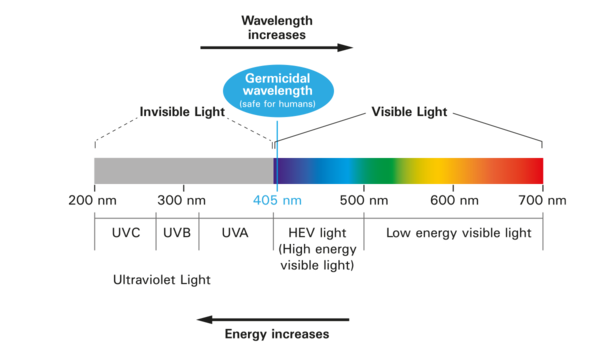.
MULTI-DIMENSIONALITATEA SI BOLILE
De-a lungul vietii, corpurile comunica cu noi in permanenta, aratandu-ne dezechilibrele de care sunt afectate. Cei care alegem sa primim aceste mesaje, continuam sa cautam raspunsuri si solutii la aceste dezechilibre. Cei care insa aleg sa 'nu simta', cu alte cuvinte aleg calea indiferentei si a lipsei de responsabilitate, apeleaza la droguri - sub denumirea lor moderna de 'medicamente'.
In societatea omului 'modern' drogurile, chimioterapia si radiatiile nucleare, la fel si amputarea diverselor parti ale corpului sunt considerate 'normale' si 'benefice'.
In realitate, raspunsul la problemele de sanatate este cat se poate de simplu - Dieta Ancestrala.
Pentru a intelege ce este boala, aceasta trebuie abordata la nivel multidimensional. Asa dupa cum explica George Kavassilas, Corpul Uman este un fractal al intregului Univers. Aceasta inseamna ca fiecare celula, molecula, atom, fiecare microorganism din corpul nostru este de fapt o entitate de sine statatoare, reprezentant al unui 'coltisor' din acest vast Univers (fiecare celula este o galaxie, fiecare molecula este o nebuloasa, fiecare atom este o constelatie, corpurile noastre fiind in realitate Universuri). Metaforic, George spune ca fiecare dintre noi suntem regi si regine peste aceasta imparatie care o reprezinta Corpul Uman. Fiecare dintre noi suntem responsabili pentru miliardele de fiinte care ne alcatuiesc corpurile.
Intelegand profunzimea si complexitatea acestui adevar, mai puteti privi cu indiferenta la dezechilibrele de care suferiti? Mai puteti alege calea 'convenientei', a iresponsabilitatii, atunci cand alegeti sa va distrugeti sistematic 'slujitorii' fideli'? Sa ii intoxicati? Sa ii radiati? Sau chiar sa ii eliminati in totalitate? Si care sunt repercusiunile pe care aceste actiuni ale voastre le au asupra Existentei voastre Universale, v-ati pus aceasta intrebare?
Cum credeti ca puteti duce o viata echilibrata intr-un corp aflat intr-o continua stare de stres si lupta? Ce se intampla de fapt cand un corp este invadat de un parazit? Parazitii sunt anaerobi, deci au nevoie de un mediu lipsit de oxigen pentru a se dezvolta. Cand un parazit patrunde in corp, acesta va injecta gazda cu o substanta chimica, nociva care ii va permite sa se instaleze in 'noua casa'. Ce este de fapt acest chimical emis de parazit? Este o 'parte' a sa, cu alte cuvinte are aceeasi frecventa/ vibratie ca si parazitul, iar imprastierea chimicalului in 'noua locuinta' va modifica frecventa 'gazdei' si o va aduce la o frecventa mult mai apropiata de cea a parazitului, care sa permita existenta acestuia. Pe tot parcursul acestei relatii de dependenta, parazitul va continua sa elibereze aceste chimicale/ otravuri care vor induce tot mai mult haos in vibratia armonioasa a organismului.
Sanatate = armonie/ echilibru
Boala = dezechilibru/ haos
Interesant este ca mama mea, inainte de a incepe terapia cu H₂O₂, a avut un vis in care se facea ca multi barbati straini au intrat in casa in care se afla ea, s-au instalat pe niste scaune si au inceput sa fumeze atat de mult (parca era o 'conferinta de fumat' a spus mama), atfel incat tot mediul a devenit toxic pentru cei care locuiau in casa.
Si eu am avut astfel de vise in timpul curelor de dexintoxicare. Am visat spre exemplu ca multi straini barbati si femei veneau in casa, neinvitati, umpleau camerele 'de la perete la perete' si se apucau sa dea petreceri, facand foarte multa mizerie peste tot in casa. Cand incercam sa ii dau afara, spunandu-le ca e timpul sa plece, ei nici nu ma bagau in seama si isi continuau 'dezmatu'. Eu ii amenintam ca voi chema politia, luam telefonul sa sun la politie, dupa care mi-aduceam aminte ca nu ma pot baza pe 'sistem' si ca imi pot face singura dreptate.
Cand am inceput terapia aceasta, am visat ca ma aflam cu sotul meu intr-un tren, a venit un barbat foarte impunator, viclean si 'uns cu toate alifiile', care fara sa ne dam seama ne-a furat bagajul situat deasupra noastra. Eu l-am vazut plecand si am recunoscut haina sotului, am strigat: "Politia, Politia", mi-am reamintit ca politia nu e de mare ajutor si m-am dus si l-am infruntat direct pe acest barbat si am luat inapoi ce era al nostru.
Odata ce chimicalul toxic emis de parazit ajunge in sange, acesta va fi raspandit in intregul organism, astfel incat fiecare celula a corpului este afectata.
In concluzie, datorita parazitarii, nu numai ca murim deshidratati si malnutriti (parazitii impiedica hidratarea, nutritia si excretia corecta a celulelor), dar murim intoxicati si asfixiati.
APA OXIGENATA
LAMPA CU ULTRAVIOLETE
VINDECAREA ABSOLUTA ✬ DIETA ANCESTRALA ✬
TESTE DE SANGE
.
- Acum este Sâm, Iul 27 2024 2:13 am
Vindecarea cancerului cu ultraviolete, H2O2, etc.
7 mesaje
• Pagina 1 din 1
.
Vindecarea cancerului
Pentru cei care aveti cancer si doriti sa va vindecati, trebuie mai intai sa intelegeti ce este de fapt cancerul. Pe langa faptul ca este un fungus, cancerul este si produsul/ rezultatul multor factori de stres la care este supus organismul.
In tratarea cancerului, trebuie sa tineti cont si de urmatorii factori care duc la dezvoltarea acestuia:
Asa dupa cum am mai spus, sanatatea reprezinta starea de armonie a organismului, iar boala - starea de haos si dezechilibru. Pentru restabilirea armoniei in organism recomand:
De asemenea un stil de viata activ. Recomand exercitiul aerobic:
Pe plan spiritual, va recomand sa abordati o atitudine responsabila, sa va reamintiti ca toate experientele pe care le aveti au fost create chiar de voi - Fiinta Infinita care sunteti - sa va asumati raspunderea pentru boala de care suferiti (este a voastra!), sa o cuprindeti cu intreaga voastra Fiinta, sa ii multumiti, sa o aduceti in Inima si sa o eliberati pentru a putea fi transformata in Lumina.
.
Vindecarea cancerului
Pentru cei care aveti cancer si doriti sa va vindecati, trebuie mai intai sa intelegeti ce este de fapt cancerul. Pe langa faptul ca este un fungus, cancerul este si produsul/ rezultatul multor factori de stres la care este supus organismul.
In tratarea cancerului, trebuie sa tineti cont si de urmatorii factori care duc la dezvoltarea acestuia:
- cantitatile uriase de otravuri acumulate in urma alimentatiei total necorespunzatoare-speciei, bazate pe plante (zaharide), ce produc distrugeri colosale in organism!
- carcinogeni: alimente si bauturi, plastice, produse cosmetice
- metale grele: alimente si bauturi, vase de gatit, plombe dentare (mercur), vaccinuri
- obturatii de canal - Radacina dintelui sanatos este deschisa, fiind strabatuta de nervi si vase de sange. In obturatiile de canal, nervul este extirpat iar radacina cimentata/ inchisa. Astfel, dintele mort devine un focar extraordinar de infectie, rezultatul fiind putrezirea osului. Fungusul predominant ce se dezvolta in canalul obturat al dintelui mort este Candida albicans
Asa dupa cum am mai spus, sanatatea reprezinta starea de armonie a organismului, iar boala - starea de haos si dezechilibru. Pentru restabilirea armoniei in organism recomand:
- Dieta Ancestrala, terapiile cu oxigen, terapia cu ultraviolete, curatarea colonului
De asemenea un stil de viata activ. Recomand exercitiul aerobic:
- miscarea in aer liber, yoga, activarea nervului vag prin tinutul respiratiei
Pe plan spiritual, va recomand sa abordati o atitudine responsabila, sa va reamintiti ca toate experientele pe care le aveti au fost create chiar de voi - Fiinta Infinita care sunteti - sa va asumati raspunderea pentru boala de care suferiti (este a voastra!), sa o cuprindeti cu intreaga voastra Fiinta, sa ii multumiti, sa o aduceti in Inima si sa o eliberati pentru a putea fi transformata in Lumina.
.
-

mszavai - Site Admin
- Mesaje: 342
- Membru din: Mar, Iul 12 2005 1:38 am
.
Motivul pentru care apa oxigenata da rezultate extraordinare in vindecarea cancerului si a multor altor boli este pentru ca oxigenul pe care il contin reuseste sa penetreze peretele celulelor canceroase (cancerul este de fapt un fungus - candida) si a altor celule parazitare (fungi, virusuri, bacterii, radicali liberi) si atunci corpul reuseste sa le atace.
In timp ce alte substante reusesc sa distruga bacteriile, fungii raman neafectati si continua sa se multiplice si sa intoxice organismul pentru a castiga cat mai mult control asupra corpului.
In timp ce microorganismele benefice din organism sunt aerobe (au nevoie de un mediu oxigenat pentru a se dezvolta), parazitii de orice fel sunt anaerobi (au nevoie de un mediu lipsit de oxigen pentru a 'prinde radacini' si a se multiplica).
Terapia cu H₂O₂

Terapia cu apa oxigenata se face in modul urmator:
Daca pe parcursul tratamentului procesul de vindecare devine prea intens, se revine la numarul de picaturi folosit in ziua precedenta si se mentine acest numar de picaturi pana cand procesele scad in intensitate, dupa care se reia tratamentul conform indicatiilor.
Trebuie tinut cont de varsta persoanei, de starea de sanatate a corpului si de greutate (cu cat o persoana este mai supraponderala, cu atat corpul este mai plin de otravuri).
ATENTIE
H₂O₂ concentratie 35% se dizolva in apa (200 - 220 ml) pentru a obtine H₂O₂ concentratie 3%.
Personal, prefer sa iau 15 - 25 picaturi de H₂O₂, in timpul mesei, sau dupa masa. In felul acesta se evita starea de 'greata' sau 'ameteala' experimentata atunci cand H₂O₂ se ia pe stomacul gol.
In Viata, este foarte important sa urmam, pe cat posibil, CALEA DE MIJLOC A ECHILIBRULUI.
Eu cumpar H₂O₂ concentratie 35% grad alimentar direct de la unul dintre producatorii nationali Pure Health Discounts de unde se aprovizioneaza si farmacille. Produsul lor nu sta in depozit mai mult de 7-14 zile de la data de fabricatie, este bineinteles imbuteliat in plastic (din pacate), dar imediat ce l-am primit il transfer in sticle de sticla inchise la culoare pe care le pun intr-un loc intunecat si racoros.
Oxigenul din apa oxigenata se descompune in contact cu lumina. De asemenea, nu este recomandat ca H₂O₂ concentratie 35% sa fie dizolvat in prealabil in apa, deoarece mineralele din apa duc la descompunerea atomului de oxigen. Dizolvarea se va face chiar in momentul in care se foloseste solutia.
.
Motivul pentru care apa oxigenata da rezultate extraordinare in vindecarea cancerului si a multor altor boli este pentru ca oxigenul pe care il contin reuseste sa penetreze peretele celulelor canceroase (cancerul este de fapt un fungus - candida) si a altor celule parazitare (fungi, virusuri, bacterii, radicali liberi) si atunci corpul reuseste sa le atace.
In timp ce alte substante reusesc sa distruga bacteriile, fungii raman neafectati si continua sa se multiplice si sa intoxice organismul pentru a castiga cat mai mult control asupra corpului.
In timp ce microorganismele benefice din organism sunt aerobe (au nevoie de un mediu oxigenat pentru a se dezvolta), parazitii de orice fel sunt anaerobi (au nevoie de un mediu lipsit de oxigen pentru a 'prinde radacini' si a se multiplica).
Terapia cu H₂O₂

Terapia cu apa oxigenata se face in modul urmator:
- Se foloseste H₂O₂ concentratie 35% grad alimentar (fara stabilizatori si alti aditivi) care se dizolva in 200 - 220 ml apa, astfel incat concentratia de H₂O₂ devine 3%. Solutia astel rezultata se ia de 3 ori pe zi, de preferinta pe stomacul gol.
- Se incepe de la 3 picaturi/ de 3 ori pe zi si se adauga progresiv cate o picatura pe zi, pana se ajunge la 25 picaturi/ de 3 ori pe zi, dupa care se intrerupe terapia.
Daca pe parcursul tratamentului procesul de vindecare devine prea intens, se revine la numarul de picaturi folosit in ziua precedenta si se mentine acest numar de picaturi pana cand procesele scad in intensitate, dupa care se reia tratamentul conform indicatiilor.
Trebuie tinut cont de varsta persoanei, de starea de sanatate a corpului si de greutate (cu cat o persoana este mai supraponderala, cu atat corpul este mai plin de otravuri).
ATENTIE
H₂O₂ concentratie 35% se dizolva in apa (200 - 220 ml) pentru a obtine H₂O₂ concentratie 3%.
Personal, prefer sa iau 15 - 25 picaturi de H₂O₂, in timpul mesei, sau dupa masa. In felul acesta se evita starea de 'greata' sau 'ameteala' experimentata atunci cand H₂O₂ se ia pe stomacul gol.
In Viata, este foarte important sa urmam, pe cat posibil, CALEA DE MIJLOC A ECHILIBRULUI.
Eu cumpar H₂O₂ concentratie 35% grad alimentar direct de la unul dintre producatorii nationali Pure Health Discounts de unde se aprovizioneaza si farmacille. Produsul lor nu sta in depozit mai mult de 7-14 zile de la data de fabricatie, este bineinteles imbuteliat in plastic (din pacate), dar imediat ce l-am primit il transfer in sticle de sticla inchise la culoare pe care le pun intr-un loc intunecat si racoros.
Oxigenul din apa oxigenata se descompune in contact cu lumina. De asemenea, nu este recomandat ca H₂O₂ concentratie 35% sa fie dizolvat in prealabil in apa, deoarece mineralele din apa duc la descompunerea atomului de oxigen. Dizolvarea se va face chiar in momentul in care se foloseste solutia.
.
-

mszavai - Site Admin
- Mesaje: 342
- Membru din: Mar, Iul 12 2005 1:38 am
Tratamentul cu apa oxigenata metoda lui Bill Munro
.
Bill Munro (March 19,1924 - January 2014) vorbeste despre modul cum s-a vindecat de cancer de prostata si melanom folosind H₂O₂. Doctorul ii spusese bineinteles ca trebuie sa faca chimioterapie.
Bill a folosit H₂O₂ grad farmaceutic (contine stabilizatori si metale grele) concentratie 3% (concentratia la care H₂O₂ se gaseste in farmacii in America). Folosind o sticluta de spray nazal pe care o umplea cu H₂O₂ 3%, el pulveriza apa oxigenata in gat. 10 pulverizari/ de 7-8 ori pe zi timp de 4 luni, dupa care a scazut la 5 pulverizari/ de 7 ori pe zi. Bill exemplifica aceasta metoda in video-ul de mai jos.
El spune ca dupa 6 zile melanomul a disparut, iar cand a mers din nou la doctor, acesta i-a spus ca nu mai are cancer si sa revina peste 6 luni pentru a fi din nou testat.
Bill spune ca folosind aceasta metoda cancerul se vindeca intr-o luna, insa tratamentul trebuie continuat timp de patru luni. Bill Munro a trait pana la varsta de 90 ani, spune ca a fost foarte activ si nu a luat nici un fel de medicamente sau vitamine.
ARTICOLE (engleza)
Hydrogen Peroxide to heal Prostate Cancer - Bill Munro
The Many Benefits of Hydrogen Peroxide - Dr. David G. Williams
.
Bill Munro (March 19,1924 - January 2014) vorbeste despre modul cum s-a vindecat de cancer de prostata si melanom folosind H₂O₂. Doctorul ii spusese bineinteles ca trebuie sa faca chimioterapie.
Bill a folosit H₂O₂ grad farmaceutic (contine stabilizatori si metale grele) concentratie 3% (concentratia la care H₂O₂ se gaseste in farmacii in America). Folosind o sticluta de spray nazal pe care o umplea cu H₂O₂ 3%, el pulveriza apa oxigenata in gat. 10 pulverizari/ de 7-8 ori pe zi timp de 4 luni, dupa care a scazut la 5 pulverizari/ de 7 ori pe zi. Bill exemplifica aceasta metoda in video-ul de mai jos.
El spune ca dupa 6 zile melanomul a disparut, iar cand a mers din nou la doctor, acesta i-a spus ca nu mai are cancer si sa revina peste 6 luni pentru a fi din nou testat.
Bill spune ca folosind aceasta metoda cancerul se vindeca intr-o luna, insa tratamentul trebuie continuat timp de patru luni. Bill Munro a trait pana la varsta de 90 ani, spune ca a fost foarte activ si nu a luat nici un fel de medicamente sau vitamine.
ARTICOLE (engleza)
Hydrogen Peroxide to heal Prostate Cancer - Bill Munro
The Many Benefits of Hydrogen Peroxide - Dr. David G. Williams
.
-

mszavai - Site Admin
- Mesaje: 342
- Membru din: Mar, Iul 12 2005 1:38 am
.
Lampa cu Ultraviolete UV-B (311nm)
Mod de utilizare
Lampile DermaHealer (firma americana)
https://www.favoriteplus.com/products/Psoriasis-Lamp
Lampa Dermalight 80 (firma germana)
https://www.drhoenle.de/produkte/dermalight-80
Mod de utilizare (recomandat pentru eczeme, Psoriasis, Vitiligo):
Pentru un tratament eficient se incepe cu o perioada de expunere foarte scurta de maxim 30 secunde pe zona afectata, timp de 7 zile, apoi, in functie de rezultate, se creste treptat timpul de expunere pana la 60 secunde pe zona afectata. Tratamentul zilnic, cu expuneri de scurta durata, ofera cele mai bune rezultate.
Tratamentul nu trebuie sa depaseasca mai mult de doua saptamani de tratament zilnic, dupa care se face pauza o saptamana si apoi se reia ciclul.
Odata ce afectiunea se amelioreaza considerabil si pielea se repigmenteaza, tratamentul de intretinere este de o sedinta pe saptamana. La peste 90% din persoanele ce au urmat acest tratament pielea s-a repigmentat in decurs de un an.
Foarte important de mentionat este faptul ca aceste lampi folosesc tuburi fluorescente cu frecventa de 311 nm si nu LED-uri. Este cunoscut faptul ca, dintre toate luminile artificiale folosite in prezent, lumina de tip LED este cea mai detrimentala sanatatii!

Lampa cu Ultraviolete UV-B (311nm) emite o lumina bleu-violet si a fost creata pe baza luminii ultraviolete emise de Soare, care se stie ca este deosebit de benefica.
Zorii si amurgul reprezinta - Echinoctiile Zilei -
momentul cand cele 2 Elemente FOCUL si APA sunt in perfect echilibru
Organismul (uman, animal) poate beneficia de fototerapia cu Ultraviolete UV-B (311nm), atata timp cat expunerea este moderata si corecta si se ia in considerare varsta, greutatea corporala si tipul de afectiune.
Recomand ca sedinta initiala sa fie de 20 secunde, pentru a va putea familiariza cu intensitatea si cu modul cum va afecteaza aceasta lumina. Apoi sa cresteti la 30 secunde pe zona afectata, iar sedinta de tratament (per total) sa nu depaseasca 2 - 4 minute. De asemenea recomand ca dupa sedinta de tratament sa se faca cateva zile de pauza.
Lumina de tip UV-B este deosebit de eficienta la tratarea bolilor de piele.
Pentru alte afectiuni recomand ca tratamentul sa nu depaseasca mai mult de o luna, avand in vedere ca si aceasta lumina este artificiala si este o forma de radiatie!
.
Lampa cu Ultraviolete UV-B (311nm)
Mod de utilizare
Lampile DermaHealer (firma americana)
https://www.favoriteplus.com/products/Psoriasis-Lamp
Lampa Dermalight 80 (firma germana)
https://www.drhoenle.de/produkte/dermalight-80
Mod de utilizare (recomandat pentru eczeme, Psoriasis, Vitiligo):
Pentru un tratament eficient se incepe cu o perioada de expunere foarte scurta de maxim 30 secunde pe zona afectata, timp de 7 zile, apoi, in functie de rezultate, se creste treptat timpul de expunere pana la 60 secunde pe zona afectata. Tratamentul zilnic, cu expuneri de scurta durata, ofera cele mai bune rezultate.
Tratamentul nu trebuie sa depaseasca mai mult de doua saptamani de tratament zilnic, dupa care se face pauza o saptamana si apoi se reia ciclul.
Odata ce afectiunea se amelioreaza considerabil si pielea se repigmenteaza, tratamentul de intretinere este de o sedinta pe saptamana. La peste 90% din persoanele ce au urmat acest tratament pielea s-a repigmentat in decurs de un an.
Foarte important de mentionat este faptul ca aceste lampi folosesc tuburi fluorescente cu frecventa de 311 nm si nu LED-uri. Este cunoscut faptul ca, dintre toate luminile artificiale folosite in prezent, lumina de tip LED este cea mai detrimentala sanatatii!

Lampa cu Ultraviolete UV-B (311nm) emite o lumina bleu-violet si a fost creata pe baza luminii ultraviolete emise de Soare, care se stie ca este deosebit de benefica.
Zorii si amurgul reprezinta - Echinoctiile Zilei -
momentul cand cele 2 Elemente FOCUL si APA sunt in perfect echilibru
Organismul (uman, animal) poate beneficia de fototerapia cu Ultraviolete UV-B (311nm), atata timp cat expunerea este moderata si corecta si se ia in considerare varsta, greutatea corporala si tipul de afectiune.
Recomand ca sedinta initiala sa fie de 20 secunde, pentru a va putea familiariza cu intensitatea si cu modul cum va afecteaza aceasta lumina. Apoi sa cresteti la 30 secunde pe zona afectata, iar sedinta de tratament (per total) sa nu depaseasca 2 - 4 minute. De asemenea recomand ca dupa sedinta de tratament sa se faca cateva zile de pauza.
Lumina de tip UV-B este deosebit de eficienta la tratarea bolilor de piele.
Pentru alte afectiuni recomand ca tratamentul sa nu depaseasca mai mult de o luna, avand in vedere ca si aceasta lumina este artificiala si este o forma de radiatie!
.
-

mszavai - Site Admin
- Mesaje: 342
- Membru din: Mar, Iul 12 2005 1:38 am
Vindecarea cu raze de tip UV-B
Absolut tot ce ne inconjoara reprezinta forma de manifestare a unei Fiinte si este deci, LUMINA. Indiferent de ceea ce consumam, Corpul Uman (prin diversele procese de descompunere si absorbtie) asimileaza doar LUMINA - numita in mod evaziv 'energie'!
Existam dincolo de Tehnologie, iar toate tehnologiile introduse au fost special create sa blocheze Evolutia Tranformatoare Super-Accelerata a Fiintei Umane - OMUL FIIND FORMA CEA MAI COMPLEXA DE MANIFESTARE LA NIVEL UNIVERSAL.
PULSUL haotic introdus in mod sistematic in Biologia Umana interfereaza cu Procesele Armonioase Multi-Dimensionale de care este capabil Corpul Uman, rezultatul fiind degenerarea organismului - 'boala' si incheierea brutala a formei de manifestare - 'moartea'.
Procesul de transformare a Realitatii Noastre se caracterizeaza prin Accelerarea Vibratiei (frecvente din ce in ce mai scurte si rapide), nu 'ascensionare'!
In urma terapiei cu UV-B, frecventa (vibratia) corpului se accelereaza. Ca efect, corpul isi reduce atacul asupra energiilor parazit, simptomele - in cazul afectiunilor de piele - devenind vizibil atenuate. Urmand un tratament sustinut, 'boala' (vibratia haotica; frecventa lunga si inceata) nu mai poate co-exista in acelasi mediu (spectru de frecventa) si ca urmare se dezintegreaza!
Prin comparatie, 'medicina moderna' se bazeaza pe alterarea compozitiei chimice a Sangelui (expresia manifestata a Spiritului), in scopul deconectarii Fiintelor de la Realitatea Naturala a Mamei Pamant si a Tatalui Soare!
.
Absolut tot ce ne inconjoara reprezinta forma de manifestare a unei Fiinte si este deci, LUMINA. Indiferent de ceea ce consumam, Corpul Uman (prin diversele procese de descompunere si absorbtie) asimileaza doar LUMINA - numita in mod evaziv 'energie'!
Existam dincolo de Tehnologie, iar toate tehnologiile introduse au fost special create sa blocheze Evolutia Tranformatoare Super-Accelerata a Fiintei Umane - OMUL FIIND FORMA CEA MAI COMPLEXA DE MANIFESTARE LA NIVEL UNIVERSAL.
PULSUL haotic introdus in mod sistematic in Biologia Umana interfereaza cu Procesele Armonioase Multi-Dimensionale de care este capabil Corpul Uman, rezultatul fiind degenerarea organismului - 'boala' si incheierea brutala a formei de manifestare - 'moartea'.
Procesul de transformare a Realitatii Noastre se caracterizeaza prin Accelerarea Vibratiei (frecvente din ce in ce mai scurte si rapide), nu 'ascensionare'!
In urma terapiei cu UV-B, frecventa (vibratia) corpului se accelereaza. Ca efect, corpul isi reduce atacul asupra energiilor parazit, simptomele - in cazul afectiunilor de piele - devenind vizibil atenuate. Urmand un tratament sustinut, 'boala' (vibratia haotica; frecventa lunga si inceata) nu mai poate co-exista in acelasi mediu (spectru de frecventa) si ca urmare se dezintegreaza!
Prin comparatie, 'medicina moderna' se bazeaza pe alterarea compozitiei chimice a Sangelui (expresia manifestata a Spiritului), in scopul deconectarii Fiintelor de la Realitatea Naturala a Mamei Pamant si a Tatalui Soare!
.
-

mszavai - Site Admin
- Mesaje: 342
- Membru din: Mar, Iul 12 2005 1:38 am
7 mesaje
• Pagina 1 din 1
Cine este conectat
Utilizatorii ce navighează pe acest forum: Niciun utilizator înregistrat şi 8 vizitatori
